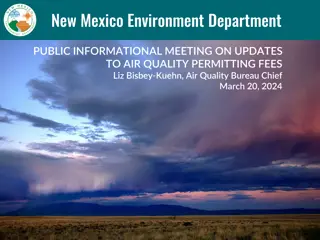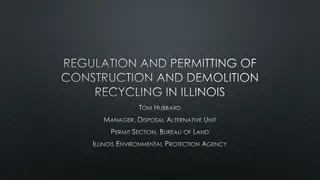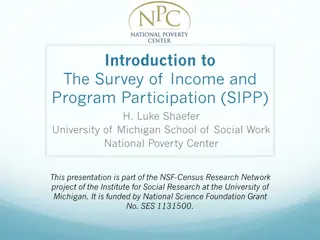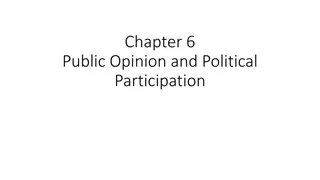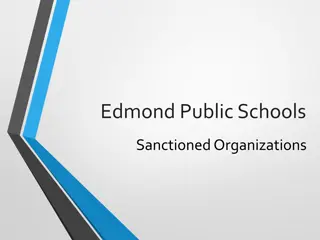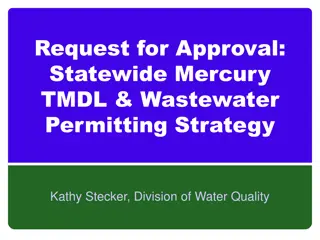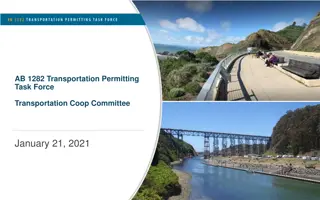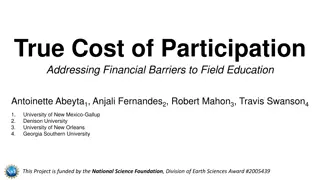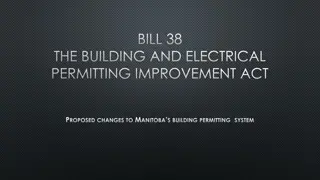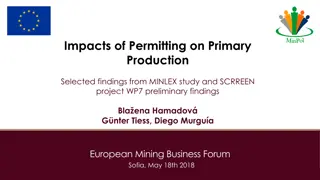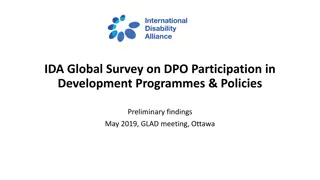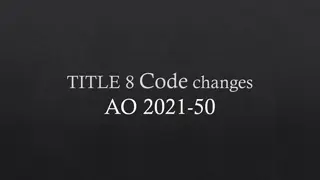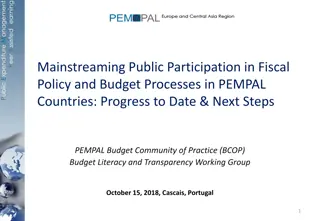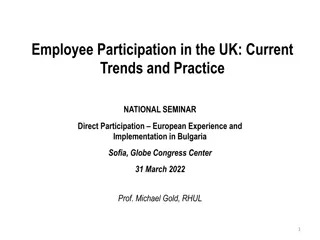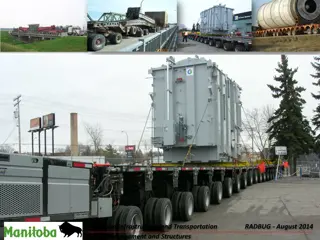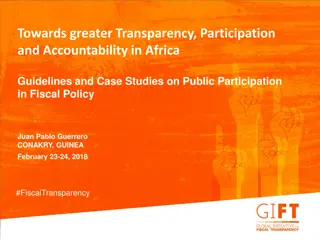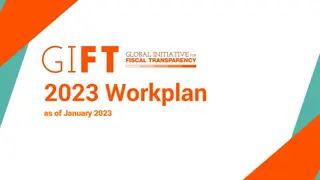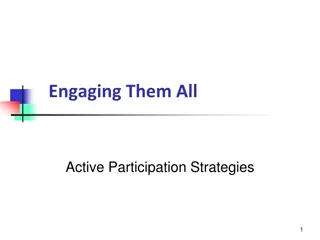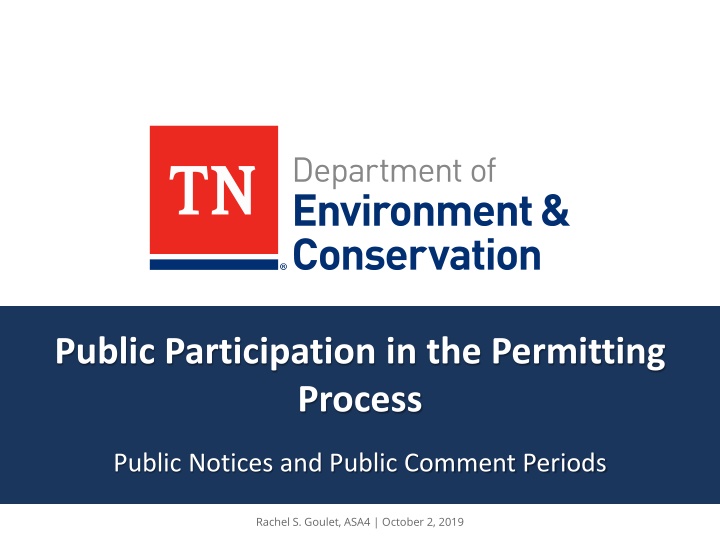
Public Participation in Permitting Process: Guidelines and Triggers
Learn about public participation in the permitting process, including public notices, comment periods, and important triggers for solid and hazardous waste facilities. Understand how the public can engage with regulatory agencies to voice their concerns and contribute to the decision-making process.
Download Presentation

Please find below an Image/Link to download the presentation.
The content on the website is provided AS IS for your information and personal use only. It may not be sold, licensed, or shared on other websites without obtaining consent from the author. If you encounter any issues during the download, it is possible that the publisher has removed the file from their server.
You are allowed to download the files provided on this website for personal or commercial use, subject to the condition that they are used lawfully. All files are the property of their respective owners.
The content on the website is provided AS IS for your information and personal use only. It may not be sold, licensed, or shared on other websites without obtaining consent from the author.
E N D
Presentation Transcript
Public Participation in the Permitting Process Public Notices and Public Comment Periods Rachel S. Goulet, ASA4 | October 2, 2019
Public Participation Public participation in the permitting process is intended to encourage a dialog between the public, the applicant, and the TDEC permit writers Public participation affords the public an opportunity to have their voices heard Equally importantly it lets TDEC share our message directly with the people we serve It is not just a regulatory requirement; it is also a best practice! In addition to following state and federal rules and regulations, we consult EPA s RCRA Public Participation Manual
Permitting Process Public participation requirements in Title 40 of the CFR Also, in State REGS 0400-11 and 0400-12 Public input is invited at several stages of the process, beginning before the permittee even submits their application to TDEC TDEC communicates to the public through public notices Some notices are informational and others invite comments Regulations dictate minimum comment periods and also what types of comments we can consider Comments are addressed in the Response to Comments document with the final permit decision
Public Notice Triggers Solid Waste When a Part I application is first submitted When the full application has been received and reviewed and a tentative decision on it made When a major modification to a permit is proposed When a public hearing is scheduled When a final decision is made on the permit application When there is an ownership change for a permitted facility
Public Notice Triggers Hazardous Waste When a facility is preparing to submit a permit application When a corrective action or TSD permit application is received When a tentative decision to approve or deny the requested permit is made When a public hearing is scheduled When a Class 1 or 11 modification has been made When a Class 2 or 3 modification is being requested When the final decision on a permit application is made When a temporary authorization for hazardous waste activity is granted
How do we spread the word? Division maintains a Solid & Hazardous Waste Mailing List Always includes relevant state and local officials Form CN-0837 allows citizens to opt in to receive permit notices for solid and/or hazardous waste facilities in the counties of their choice, rulemaking notices and/or board meeting notices Citizens choose email or mail delivery of notices Form is online at tn.gov/environment/notices/waste/notify-me Notices are published for 90 days at tn.gov/environment/notices/waste Most notices are published in a newspaper of general circulation in the county of the relevant facility Some hazardous waste notices also involve a radio announcement (run 3 times on 2 different stations) Initial notice requires placement of sign at the facility
What about inclusivity? TDEC agrees with EPA that all people, regardless of race, color, national origin, or income, receive fair treatment and equal environmental protection, and that all people have the opportunity for meaningful involvement in decisions that will affect the environment and/or the health of their community. We include a phone number for ADA concerns and language assistance offers on all our public notices We use EPA s EJSCREEN tool to identify the demographics of the residents within one mile of the facility Although not required, we may run the public notice in a minority newspaper in addition to the notice of general circulation
Rulemaking Hearings Rulemaking hearings have their own specific processes A Secretary of State form must be completed and the signed document posted on their website at least 45 days before the hearing A redlined version of that form showing the proposed changes is also prepared DSWM prepares a brief announcement of the hearing and sends this to our mailing list Links to all three of these documents are included on our website at tn.gov/environment/notices/waste Hearing is also added to the state events calendar
Any questions? Contact Rachel Goulet in the Division of Solid Waste Management: Rachel.S.Goulet@tn.gov or 615-532-0788

